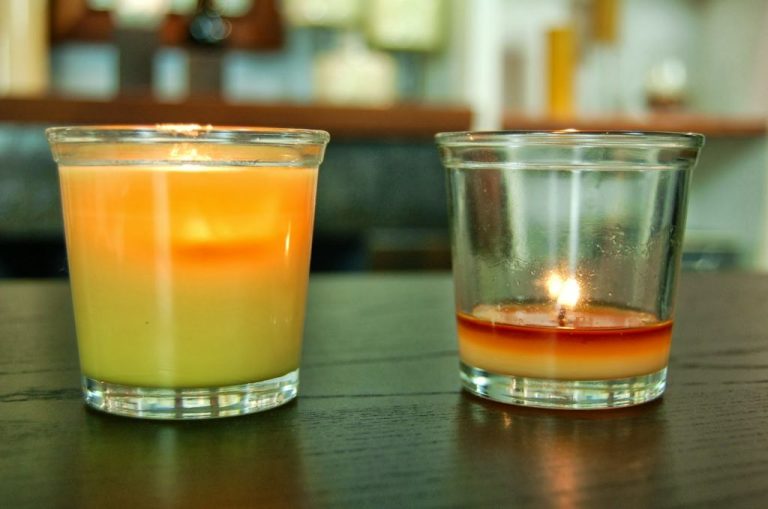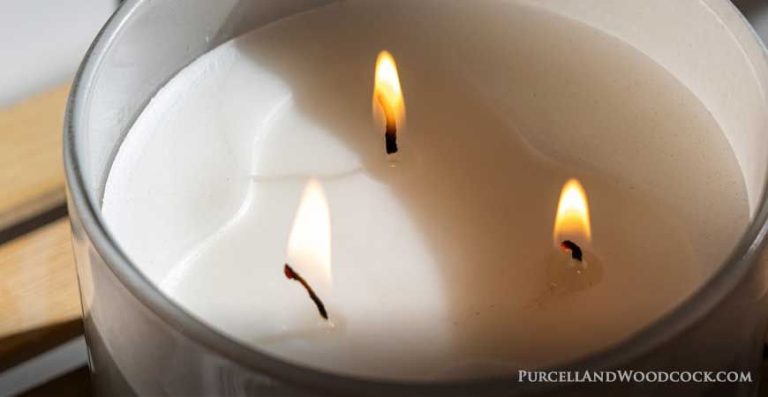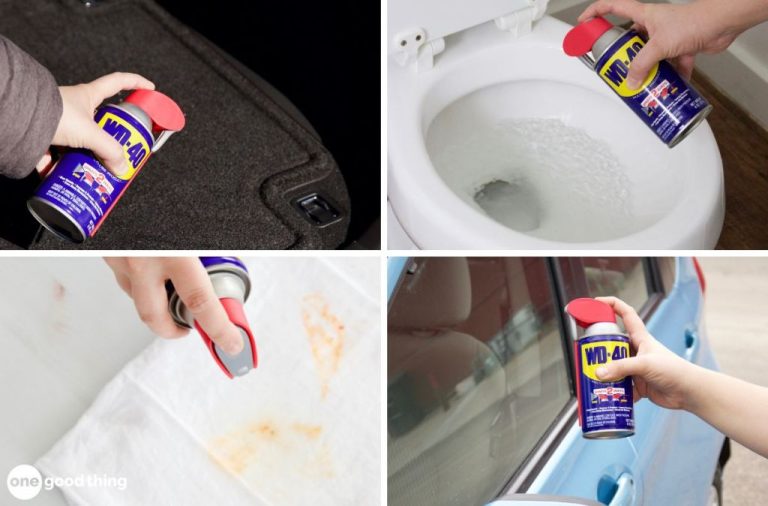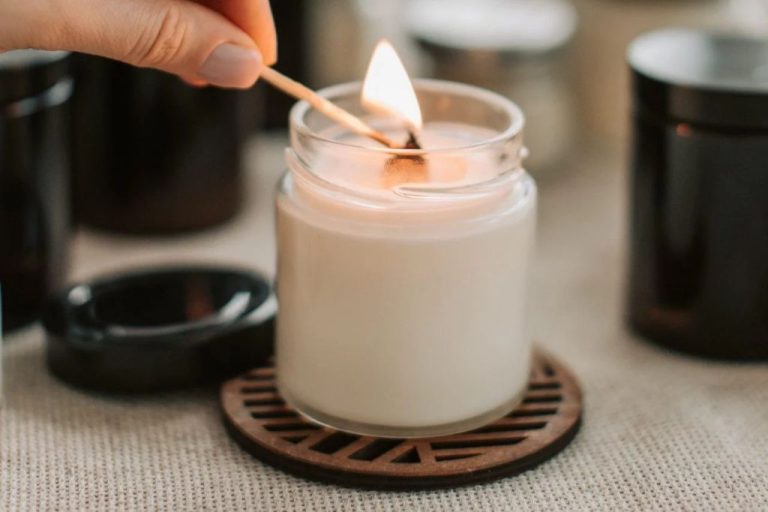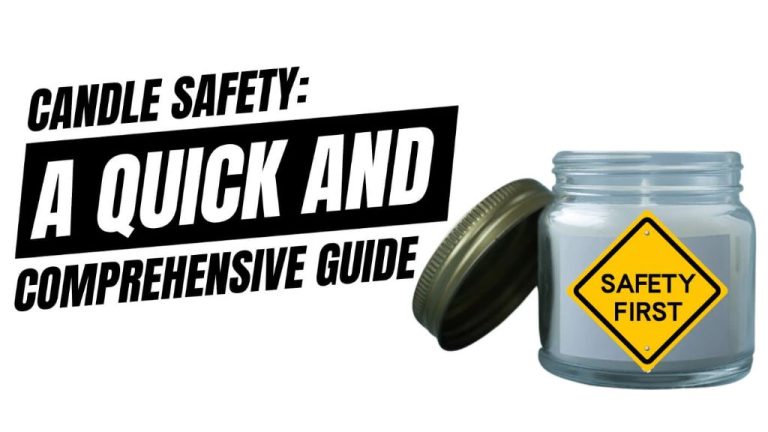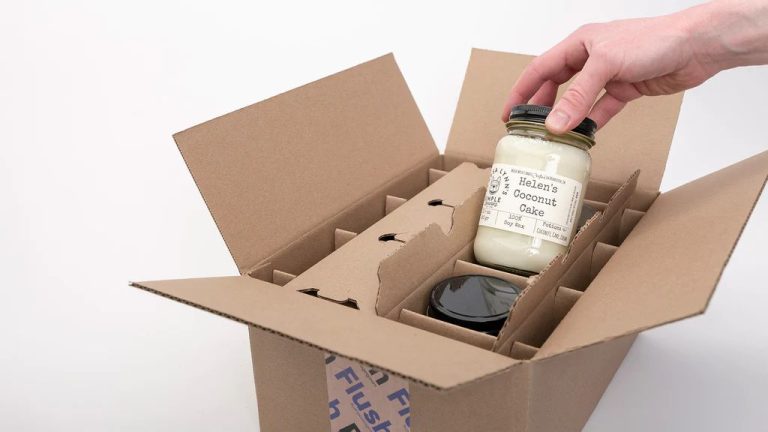How Can You Tell If A Candle Has Gone Bad?
Candles provide scent and ambience, but they are made from oil and wax, so candle quality can deteriorate over time. There are many indicators that a candle has gone bad, such as changes in appearance, scent, wick condition, smoke level, and burn time. This article provides an overview of the signs that a candle has expired and tips for knowing when to throw away old candles.
Appearance
There are a few visible signs that indicate when a candle has gone bad. One is the appearance of black soot around the wick or edges of the candle. This happens when the wick is too large and produces more soot than the flame can burn off. Soot buildup is a sign the candle is not burning efficiently and should be discarded (Wax Poetic Candle Bar, 2023).
Candles can also change color as they go bad, often turning cloudy or opaque. The wax can separate, leaving an oily film around the edges. Whitish patches may also appear on the surface. These changes show the fragrance oils are separating from the wax. A crystal-like grainy or sugary texture can also emerge, which occurs from the oils and waxes breaking down over time (Cyclone Candle Company, 2022).
If your candle was originally vivid and bright but now appears dull or faded, that’s another red flag. The color pigments are failing to retain their vibrancy. Warping or collapsing of the candle surface indicates problems as well. All these visible shifts from the candle’s original appearance mean it’s past its prime.
Wick Condition
The condition of the wick is one of the best indicators that a candle has expired. Over time and use, candle wicks can start to deteriorate in some key ways:
- Mushrooming – The tip of the wick can become enlarged and misshapen. This “mushrooming” effect prevents the wick from burning properly.
- Curling – The wick can begin to curl over onto itself instead of standing upright. This makes it difficult for the wick to draw up wax and sustain a flame.
- Blackening – Burnt wick material can accumulate on the tip of the wick, turning it black. This buildup of soot indicates poor wick performance.

If you notice any of these wick conditions, it’s a sign that the candle is past its prime and should be discarded. As the wick deteriorates, it provides a diminished experience and can even become dangerous by releasing more smoke or clogging the candle with unburnt wax.
Flame Performance
One of the most obvious signs that a candle has expired is the quality of the flame when burning. An old candle often produces a flame that is low, smoky, and dull rather than bright and vibrant. The wick may only partially light and the flame will be very small and weak, sometimes going out frequently.
According to Martha Stewart, an expired candle often develops thick black smoke or soot when burning, which are signs that the wick is no longer drawing up wax properly [1]. The wick in an old candle may have become brittle or burnt, making it challenging for the wax to travel up. Soot will dirty the glass holder and send particles into the air.
If the candle flame starts flickering, smoking, or going out quickly, it likely means the candle wax has dried out or the wick is faulty. A strong, steady flame is a sign of a fresh, high-quality candle. But weak flame performance means it’s time to replace it.
Scent
One of the key indicators that a candle has gone bad is a change in fragrance. Over time, the essential oils and fragrance components in a candle can start to fade or evaporate, leading to a candle that smells faint or different from when it was new. According to Harlem Candle Company, scent degradation happens gradually over the first 6-12 months after production depending on the candle ingredients and storage conditions.
Candles stored in hot conditions or exposed to direct sunlight are more prone to fragrance loss. A candle that smells faded or “off” compared to when it was purchased likely means it’s past its prime. Real Simple recommends discarding candles once the cold scent is no longer strong. If lit, an old candle may also give off an unpleasant burning odor due to the evaporated oils.
Bath & Body Works cautions that candles over 2-3 years old are at risk of poor scent throw even if the fragrance seems intact before burning. Testing the cold scent and doing a burn test can determine if the candle still has an appealing fragrance. When in doubt, it’s best to discard a candle with an altered fragrance, as the quality has likely degraded.
Burn Time
One of the key indicators that a candle has gone bad is an abnormal burn time. Fresh candles should burn evenly and slowly, at a rate of about 1 inch per hour. According to Harlem Candle Company, candles start to “deteriorate” after 1-2 years, and will likely burn faster or slower than intended.https://www.harlemcandlecompany.com/blogs/journal/how-long-do-candles-last-will-they-expire
Older candles tend to burn quickly because the wax softens and melts faster. This causes the wick to become engulfed in wax pools, making the flame burn out of control. According to Martha Stewart, candles over 3-4 years old may burn down in just 30 minutes due to degraded wax. https://www.marthastewart.com/8052875/do-candles-expire
On the other hand, if a candle burns slower than an inch per hour, the wax may have become too hard and rigid over time. The candle struggles to melt and release fragrance. Archipelago Candle Co. notes that natural soy or coconut wax blends have shorter shelf lives than paraffin and tend to harden more over time. https://shoparchipelago.com/blogs/blog/do-candles-expire
Smoke
One sign that a candle has gone bad is if it produces excessive or discolored smoke when burning. All candles will produce some normal amounts of smoke while the wax is melting and the wick is burning. However, plumes of thick black or gray smoke indicate problems with the candle.
According to experts, excessive amounts of soot or smoke while a candle burns is often caused by improper wick length (Everything Dawn). If the wick is too long, it will produce more soot and smoke because it’s burning too much fuel. Trimming the wick can help reduce smoke. Discolored smoke like yellow, black, or gray suggests impurities in the wax or wick that are burning.
The smoke itself is not necessarily dangerous, but the particulates can dirty surfaces, walls, and decorations (Reddit). Excessive smoke also indicates the candle is not burning efficiently. If smoke persists after trimming the wick, it likely means the candle wax or wick quality has degraded over time.
Storage Conditions
Proper storage is key to maintaining a candle’s quality and extending its shelf life. According to TLC Candle Co, candles should be stored in a cool, dry place away from direct sunlight and heat sources. Excessive heat can cause the wax to melt and distort while light exposure can fade the candle’s color. A pantry, closet, or basement are ideal storage spots. Temperatures between 50-80°F are recommended.
Candles also should be kept in an airtight container or wrapped in plastic according to Real Simple. This prevents the fragrance from dissipating and the wax from absorbing other scents. Storing upright rather than sideways minimizes wax leakage if the candle accidentally tips over.
Shelf Life
The shelf life of a candle varies depending on the type of wax, oils, and other ingredients used. According to Real Simple, a typical paraffin candle with synthetic oils can last up to two years unburned. Soy and vegetable-based candles often have a shelf life of one to two years. Beeswax candles may last up to five years before expiry. Luxury candle brands like Archipelago state their candles will perform best within one to two years after purchase. In general, most quality candles can be expected to last around 1-3 years unused before the scent and performance start to deteriorate.
Properly storing candles in a cool, dry place away from direct light and heat can help prolong their shelf life. But eventually the oils and fragrance will start to evaporate and fade. Signs that a candle is past its prime include diminished or altered scent, poor wax melt, and inconsistent burn. If a candle sits unused for over 3-5 years, it’s best to discard it even if still in the original packaging.
When to Toss
After going over some of the key signs that a candle has gone bad – sooty smoke, weak scent, spotty wax pool, short burn times, etc – it’s important to know when it’s finally time to say goodbye to that candle and toss it out. Some general rules of thumb:
If you notice any of the issues above becoming excessive or pronounced, that’s a sign the candle’s best days are behind it and it’s time to stop using it. Continuing to burn a clearly underperforming candle often just makes the experience worse.
Likewise, if a candle is several years old, even if it seems ok, it’s likely lost potency and is worth replacing with a fresh one. As some recommend, aim to use candles within 1-2 years for best results.
And if a candle ever poses any safety issues, like producing a lot of smoke or excessive flickering flames, stop burning it immediately and discard it.
Finally, trust your nose – if a candle ever smells rancid or “off,” that’s nature’s warning sign to pitch it.

